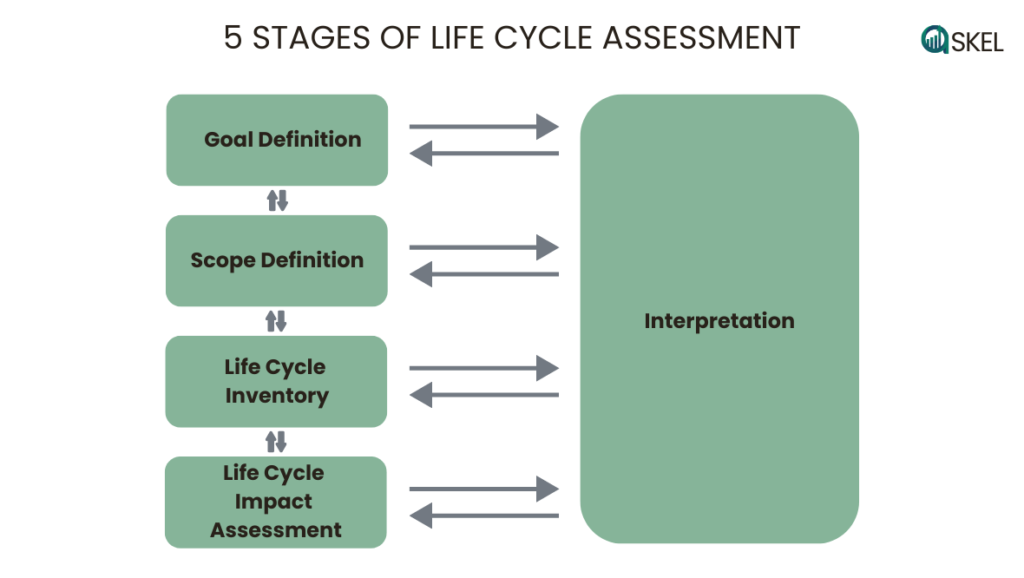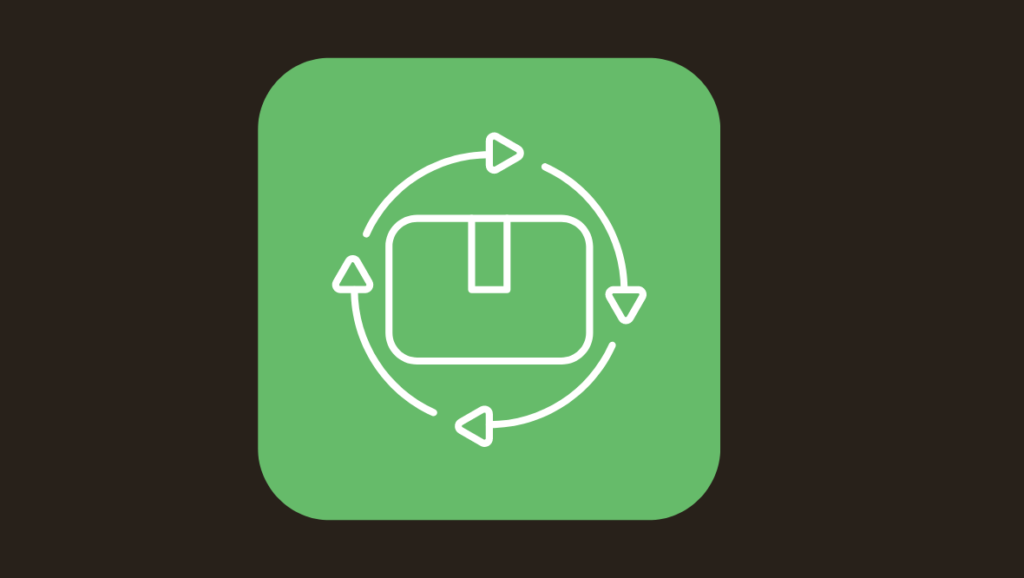Life Cycle Assessment: Understanding the Five Stages of LCA

Learn in-depth about the 5 stages of Life Cycle Assessment (LCA) and what each of them look like in practice.
Life Cycle Assessment (LCA) serves as one of the most credible tools available for evaluating the environmental impacts of a product or service throughout its entire lifespan. Over time, LCA has evolved, culminating in a widely accepted framework characterized by distinct phases. These phases, intricately interconnected, form the backbone of an LCA study.
From defining the goal and scope to conducting inventory analysis, followed by life cycle impact assessment and interpretation, each phase plays a crucial role in the overall assessment. Despite the linear progression implied by the phases, LCA is inherently iterative, often requiring revisits and adjustments at various stages. In this article, we delve into each phase, outlining their essence and highlighting their significance within the broader LCA framework.
Find out about the Key Advantages of Conducting Life Cycle Assessment (LCA)? Click to check out our in-depth article on the topic.
1. Goal Definition
Goal definition in Life Cycle Assessment (LCA) is a critical step where organizations outline the parameters and objectives of the study. It involves clarifying:
- Why the LCA study is being conducted
- What the LCA study aims to achieve
- Who the Target audience is, and
- What is the intended use of the LCA findings?
The depth and precision of the study are crucial considerations during this phase, ensuring that the goals align with the organization’s objectives and stakeholders’ interests. By establishing clear goals, organizations can effectively guide the LCA process, maximize its utility, and ensure alignment with sustainability objectives.
2. Scope Definition
Scope definition in Life Cycle Assessment (LCA) involves clearly outlining the boundaries and parameters of the study, including the product system(s)* under examination and the functions they fulfill. This phase involves making critical decisions regarding the selection of product systems and establishing the functional unit as the basis for comparison. It is essential to provide a concise yet precise description of the product system(s) to ensure clarity and accuracy in subsequent stages of the LCA process.
Additionally, in comparative LCAs, defining the functions delivered by each system is fundamental for meaningful comparison. By carefully defining the scope, LCA practitioners can effectively delineate the boundaries of the study and ensure that it remains focused on the intended objectives and outcomes.
*Product System – According to ISO, a product system is a group of connected processes that use materials and energy to perform specific functions. When we say ‘product,’ it can refer to both products and services.

3. Life Cycle Inventory
Life Cycle Inventory (LCI) analysis involves meticulously gathering and measuring all environmental inputs and outputs associated with the product’s life cycle. Imagine it as a detailed logbook tracking energy used, raw materials consumed, and any emissions released into the air, water, and land. Even solid waste and other environmental releases are documented.
In simpler terms, LCI analysis involves data collection and analysis, recording all environmental flows throughout the product’s life. Each tracked element is considered a “unit process,” and when relying on external data sources, transparency is paramount.
4. Life Cycle Impact Assessment
Quantifying the environmental impact is the next stage, building upon the comprehensive inventory. This stage, known as Life Cycle Impact Assessment (LCIA), translates the resource use and emissions data from the previous stage into a series of environmental impact indicators.
In practice LCIA involves:
- Identifying key areas of environmental concern, like climate change or resource depletion.
- Assigning the resource use and emissions data to these categories.
- Calculating the potential impact within each category, providing a quantifiable picture of the product’s environmental footprint.
Life Cycle Assessment takes into account a product’s full life cycle: from the extraction of resources, through production, use, and recycling, up to the disposal of remaining waste. Critically, LCA studies thereby help to avoid resolving one environmental problem while creating others: This unwanted “shifting of burdens” is where you reduce the environmental impact at one point in the life cycle, only to increase it at another point. Therefore, LCA helps to avoid, for example, causing waste-related issues while improving production technologies, increasing land use or acid rain while reducing greenhouse gases, or increasing emissions in one country while reducing them in another.
ILCD Handbook, General Guide for Life Cycle Assessment-Provisions and Action Steps
5. Interpretation
The final stage of Life Cycle Assessment (LCA) focuses on interpreting the findings. Here, the focus shifts to ascertaining that the analysis is sound and reliable and that it draws meaningful conclusions. This interpretation phase dissects the results for consistency and completeness, ensuring they paint an accurate picture.
A crucial step of interpretation is result validation. This involves identifying any inconsistencies or errors in data or modeling. Once the analysis is deemed reliable, the data is further analyzed to pinpoint areas of sensitivity, key contributors, and, in comparative LCAs, the differentiating factors between options. With this knowledge, considerations can be made to explore alternative approaches, adjust the functional unit (the basis for comparison), or even expand the study’s scope for a more comprehensive picture.


